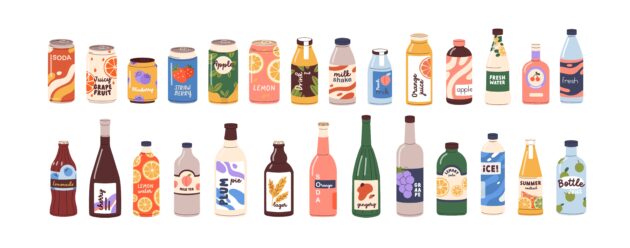
Is production line maintenance, along with the choice of packaging, a factor in beverage taste?
By Bryan Christiansen
Packaging beverage maintenance packaging production line tasteDoes your choice of packaging impact flavour?
 Photo: Good Studio/ AdobeStock
Photo: Good Studio/ AdobeStock From alcoholic beverages to fruit juices, you have control over numerous variables that enable you to create the ideal flavour for your product. But sometimes, the taste of your carefully crafted beverage can change for the worse. In this guide, we’ll take a look at how production line maintenance and choice of packaging can impact the taste of your beverages.
Potential issues caused by a poorly maintained production line
The manufacturing process of any beverage relies on numerous pieces of equipment. From heat exchangers to packaging lines, equipment maintenance is essential to the process in many ways. Failure to make it so can have a severe impact on the taste of your beverage and its drinkability.
Here are some of the most common issues.
Bacterial infections
All beverages can suffer from bacterial infections as a result of poor production line maintenance and sanitation.
The packaging line, filters, and heat exchangers can become major hot spots for bacteria and fungi. A faulty clean-in-place (CIP) system in the packaging line can lead to improper sanitization, inviting bacteria and wild yeast to enter your production. Worn gaskets and scratched hoses can also allow bacteria to thrive and contaminate the liquid.
A bacterial infection has a severe impact on the flavour and can create a major safety hazard. The introduction of wild yeast to a beverage during packaging can eventually cause glass and plastic bottles, cans, and cartons to explode.
Oxidation issues
Oxidation can transform both the flavour and appearance of beverages such as beer, wine, and fruit juices. It strips the flavour away almost entirely, leaving behind an unpleasant, stale, damp, cardboard-like taste.
Oxidation occurs when oxygen enters the beverage and reacts with organic molecules, increasing the rate at which flavour compounds and nutrients break down.
Worn gaskets and hoses, along with faulty capping heads and purging systems can all allow oxygen to enter your beverage during the packaging process.
Contamination with non-bacterial substances
Faulty machinery can enable external substances such as industrial oil, water, cleaning and sanitizing solutions, and cooling media to enter your beverage. This has a negative impact on the flavour of your beverage and can also cause major safety issues.
Again, worn gaskets and hoses are often held responsible for such contamination. Industrial oil contamination is most prevalent in machines that work with an air compressor, so it’s essential to ensure they’re regularly maintained. Meanwhile, filtration systems and heat exchangers can allow substances like cleaning and cooling solutions to enter your beverage.
Carbonation loss
The taste of carbonated drinks such as beer, sparkling wine, and cider can all change considerably if they’re not adequately carbonated. Carbonation loss often occurs during packaging as a result of faulty capping systems. In the case of pneumatic systems, a small air leak caused by worn hoses or gaskets can reduce the power, resulting in poor sealing.
Carbonation can also be lost due to faulty in-line carbonation systems, as well as pressure leaks in carbonation and maturation tanks.
Does your choice of packaging impact flavour?
When it comes to packaging, beverage producers have more choices than ever before. Modern options are all food-safe and do a great job of protecting the liquid inside. For the most part, packaging material has little direct impact on the flavour — but there are some things to bear in mind.
- Glass: Products in glass bottles are considered higher quality, although this is dictated by marketing rather than actual flavour. However, glass does offer better protection against oxygen than other materials, making it the best choice for beverages that require long-term storage and maturation — such as wine and certain beers. Glass colour is also important for some beverages. For example, brown glass is best suited for beer as it offers greater UV protection, which helps prevent skunky off-flavours.
- Polyethylene terephthalate (PET) bottles and kegs: While generally seen as an inferior material, PET offers a good level of oxygen protection, though not as good as glass. It’s a good choice for short-term storage with no discernable impact on flavour.
- Aluminum cans: While some consumers insist that cans make beverages taste like metal, this isn’t the case. Most have a thin polymer coating inside, preventing any contact with the metal. It also offers 100 per cent UV protection.
Conclusion
Ensuring your beverage tastes great every time is more about production line maintenance than the type of packaging you use. If you’re striving for quality and consistency, keeping on top of maintenance tasks is a must, and the first step in achieving that is drawing up an effective maintenance plan.
Bryan Christiansen is the founder and CEO of Limble CMMS, a CMMS solutions provider. He can be reached at mail@limblecmms.com
Print this page